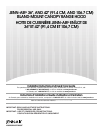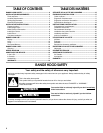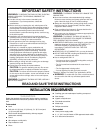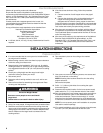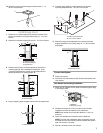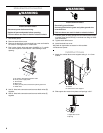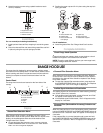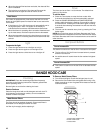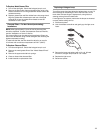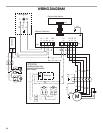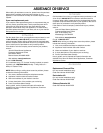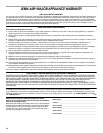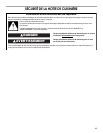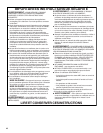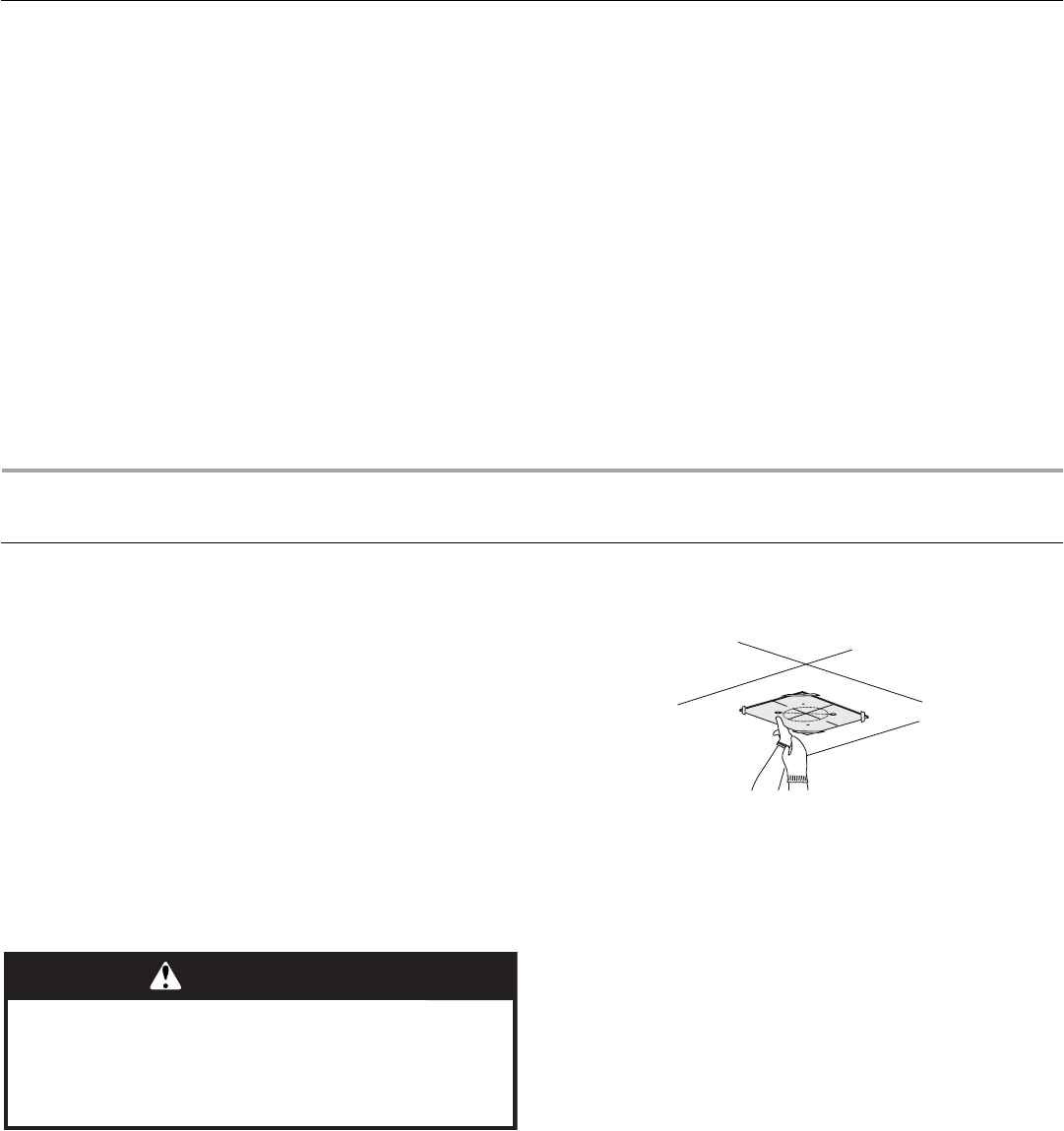
6
Electrical Requirements
Observe all governing codes and ordinances.
Ensure that the electrical installation is adequate and in
conformance with National Electrical Code, ANSI/NFPA 70 (latest
edition), or CSA Standards C22.1-94, Canadian Electrical Code,
Part 1 and C22.2 No. 0-M91 (latest edition) and all local codes
and ordinances.
If codes permit and a separate ground wire is used, it is
recommended that a qualified electrician determine that the
ground path is adequate.
A copy of the above code standards can be obtained from:
National Fire Protection Association
One Batterymarch Park
Quincy, MA 02269
CSA International
8501 East Pleasant Valley Road
Cleveland, OH 44131-5575
■ A 120 Volt, 60 Hz., AC only, 15-amp, fused electrical circuit is
required.
■ If the house has aluminum wiring, follow the procedure
below:
1. Connect a section of solid copper wire to the pigtail
leads.
2. Connect the aluminum wiring to the added section of
copper wire using special connectors and/or tools
designed and UL listed for joining copper to aluminum.
Follow the electrical connector manufacturer's recommended
procedure. Aluminum/copper connection must conform with
local codes and industry accepted wiring practices.
■ Wire sizes and connections must conform with the rating of
the appliance as specified on the model/serial rating plate.
The model/serial plate is located behind the filter on the rear
wall of the range hood.
■ Wire sizes must conform to the requirements of the National
Electrical Code, ANSI/NFPA 70 (latest edition), or CSA
Standards C22. 1-94, Canadian Electrical Code, Part 1 and
C22.2 No. 0-M91 (latest edition) and all local codes and
ordinances.
INSTALLATION INSTRUCTIONS
Prepare Location
■ It is recommended that the vent system be installed before
the range hood is installed.
■ Before making cutouts, make sure there is proper clearance
within the ceiling for exhaust vent.
■ Range hood is to be installed 24" (61.0 cm) min. for electric
cooking surfaces, 27" (68.6 cm) min. for gas cooking surfaces,
to a suggested maximum of 36" (91.4 cm) above the cooking
surface.
■ Check your ceiling height and the range hood height
maximum before you select your hood.
1. Disconnect power.
2. Determine which venting method to use: roof, wall or non-
vented.
3. Select a flat surface for assembling the range hood. Place
covering over that surface.
4. Using 2 or more people, lift range hood onto covered surface.
5. Determine and mark the centerline on the ceiling where the
range hood will be installed, considering the requirements for
ceiling support structures. See the “Location Requirements”
section. Make sure the range hood is centered over the
cooking surface.
6. Tape template in place on the ceiling at the marked
centerline.
7. Use a pencil to mark the mounting screws, wire access and
duct hole locations on the ceiling.
NOTE: Mounting hole locations should be into the ceiling
support structure.
Remove the template.
8. Drill 4 - ³⁄₁₆" (4.8 mm) pilot holes for mounting the upper
horizontal support.
9. Determine the required location for the home power supply
cable and drill a ½" (1.3 cm) diameter hole for wire access.
10. Run wire through the home power supply cable according to
the National Electrical Code or CSA Standards and local
codes and ordinances. There must be enough ½" conduit
and wires from the fused disconnect (or circuit breaker) box
to make the connection in the hood’s electrical terminal box.
NOTE: Do not reconnect power until installation is complete.
Use caulk to seal all openings.
11. (For vented installations only.) Using a jigsaw or keyhole saw,
cut a 8½" (21.6 cm) diameter hole for the vent duct.
WARNING
Excessive Weight Hazard
Use two or more people to move and install
range hood.
Failure to do so can result in back or other injury.



